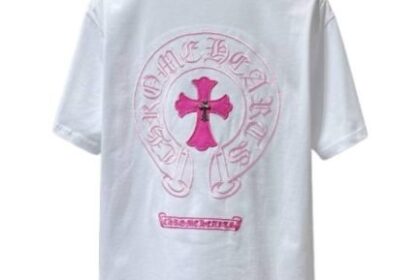Corteiz and Kapital stand as two influential fashion brands with very different origins, philosophies, and aesthetics. While Corteiz emerged from the heart of London’s underground streetwear scene, Kapital hails from Japan, deeply rooted in traditional craftsmanship and Americana-inspired design. Each brand has carved out a unique identity, drawing loyal followings for their authenticity and boundary-pushing styles. This comparison explores the nuanced differences and unexpected similarities between Corteiz and Kapital across design philosophy, brand ethos, cultural influence, production methods, pricing, and overall impact in the global fashion landscape. Understanding these aspects reveals why both names command such respect.
Brand Origins and History
Corteiz, founded in London by Clint419, began as an enigmatic streetwear label known for its exclusivity and rebellious branding. Its rise was fueled by social media buzz, underground drops, and a strong anti-establishment tone. The brand positions itself as a counter to the mainstream, advocating for self-expression through a street lens. In contrast, Kapital was established in the 1980s by Toshikiyo Hirata in Japan. Inspired by American denim culture and Japanese craftsmanship, Kapital grew slowly but steadily, known for its meticulous attention to detail. These differing origin stories have shaped both brands’ aesthetics and identities in profound ways.
Design Aesthetics and Style
Corteiz thrives on bold, gritty, and politically charged designs that resonate with youth culture. Its use of aggressive graphics, military-inspired silhouettes, and limited releases enhances its underground appeal. The branding, often rebellious, features slogans like “Rules the World,” reinforcing a defiant attitude. Kapital, however, is celebrated for its eclectic mix of traditional Japanese motifs and Americana vintage. Their garments often feature patchwork, sashiko stitching, and exaggerated silhouettes, blending past and present seamlessly. While Corteiz feels raw and confrontational, Kapital exudes artistic nuance, creating garments that are less trend-driven and more rooted in personal and cultural storytelling.
Target Audience and Cultural Impact
Corteiz primarily targets younger consumers deeply embedded in street culture, music, and social media trends. Its followers are typically drawn to the brand’s anti-mainstream ethos and limited accessibility. The hype-driven nature of Corteiz makes it highly desirable among Gen Z and younger Millennials who seek fashion as a form of resistance and community. Kapital’s audience, on the other hand, spans a broader age range, including fashion-forward individuals who appreciate craftsmanship and artisanal techniques. Its cultural impact lies in influencing designers and collectors rather than creating viral moments. Kapital is more about legacy, while Corteiz thrives on disruption and immediacy.
Brand Philosophy and Identity
At the heart of Corteiz is a philosophy of rebellion, exclusivity, and grassroots empowerment. The brand often operates outside traditional retail frameworks, using guerilla marketing and surprise drops to build mystique. It stands for non-conformity and represents a youth movement pushing back against commercialized streetwear. Kapital, in contrast, is grounded in experimentation and heritage. Its identity is shaped by founder Kiro Hirata’s vision, combining the past and present with a deep respect for craftsmanship. Kapital doesn’t chase trends; instead, it creates wearable art with a focus on storytelling. These opposing philosophies underline their contrasting roles in the fashion ecosystem.
Production Methods and Sustainability
Corteiz keeps much of its production process under wraps, focusing more on the final product and hype than on transparent sourcing. While its production scale is relatively small, the brand does not emphasize sustainability or ethical manufacturing in its messaging. Kapital, however, places a premium on traditional and sustainable methods. Many of its items are handmade or produced in small batches using time-honored Japanese techniques like indigo dyeing and boro patchwork. The brand’s slower approach to production inherently supports sustainability, valuing quality over quantity. Kapital’s transparency and respect for craft set it apart from Corteiz’s more secretive operations.
Collaborations and Partnerships
Corteiz is highly selective when it comes to collaborations, often aligning with artists and athletes rather than mainstream brands. Its most notable partnership was with Nike, which helped cement its place on the global stage while maintaining its edge. The brand leverages these collaborations to amplify its rebellious image. Kapital, conversely, has taken a more insular route, rarely partnering with other brands. When it does collaborate, it’s usually with niche designers or artists that share its commitment to craftsmanship. This reserved approach aligns with Kapital’s artisanal nature, while Corteiz uses collaborations as a tool to build cultural clout.
Pricing and Accessibility
Corteiz maintains an intentionally limited distribution strategy, which drives up demand and resale value. Its prices are relatively accessible at retail but skyrocket on secondary markets due to scarcity. This model reinforces the brand’s exclusivity and fuels its cult following. Kapital, on the other hand, sits at a higher price point even at retail, due to its labor-intensive processes and premium materials. Accessibility is limited not by hype but by cost and niche appeal. While Corteiz garments may feel like collector’s items because of their rarity, Kapital pieces are collectible for their craftsmanship and long-lasting value.
Presence in Global Markets
Corteiz has primarily focused on the UK and select global markets, using pop-up events and guerilla tactics to generate buzz abroad. Its international appeal continues to grow through social media and high-profile endorsements. Kapital, by contrast, has a more established presence in fashion capitals like Tokyo, Paris, and New York. It is stocked in high-end boutiques and specialty stores, catering to a clientele that values artisanal fashion. While Corteiz relies heavily on digital presence and word-of-mouth, Kapital has built a slower, more deliberate global expansion rooted in boutique culture and long-standing industry relationships.
Influence in Fashion Trends
Corteiz is undeniably influential in shaping modern streetwear trends, especially within urban youth culture. Its aesthetic has inspired countless imitations and helped redefine what it means to be a disruptive brand in today’s fashion climate. By blending street politics, exclusivity, and community, Corteiz has created a new blueprint for success outside the traditional system. Kapital’s influence operates on a subtler level, inspiring designers through its innovation in fabric and design rather than viral appeal. Its deconstructed silhouettes, mixed textiles, and fusion of cultures have deeply impacted avant-garde and luxury fashion scenes, making Kapital a silent trendsetter in its own right.
Community Engagement and Branding Strategy
Corteiz has built an empire on community engagement, frequently organizing surprise events, drops, and pop-ups that foster loyalty and a sense of belonging. The brand communicates directly with its audience, often bypassing traditional marketing channels. This grassroots approach has made Corteiz a cultural touchpoint among urban youth. Kapital, on the other hand, engages less with consumers directly and more through the emotional resonance of its garments. Its branding is understated, allowing the clothing to speak for itself. Kapital’s community is made up of loyal collectors and enthusiasts who appreciate the brand’s artistry and philosophy over social clout.
Conclusion: Two Titans of Modern Fashion
In conclusion, Corteiz and Kapital represent two vastly different yet equally impactful forces in contemporary fashion. Corteiz captures the spirit of rebellion, youth, and modern streetwear with raw energy and cultural immediacy. Kapital, by contrast, is a masterclass in craftsmanship, tradition, and avant-garde artistry. While one operates in the fast-paced world of limited drops and digital hype, the other moves deliberately, focusing on timeless garments and deep cultural narratives. Choosing between them isn’t about which is better—it’s about what resonates. Both brands challenge the norms of fashion, offering powerful alternatives to mainstream commercial clothing in their own unique ways.

